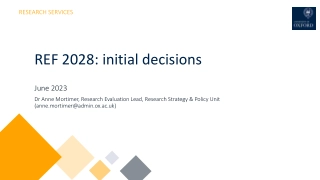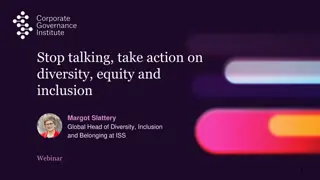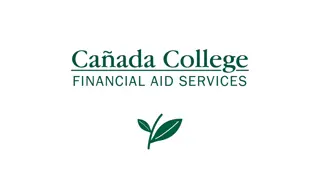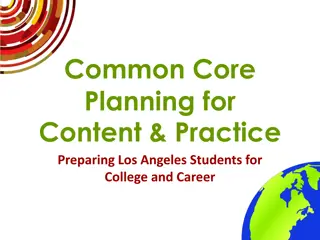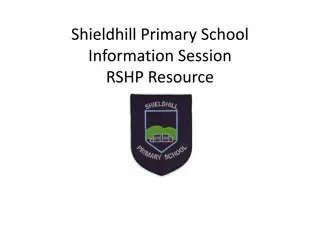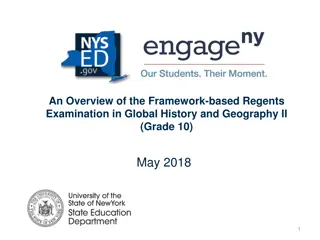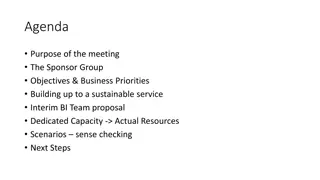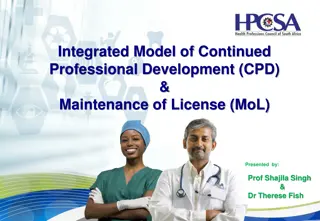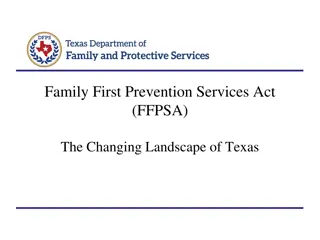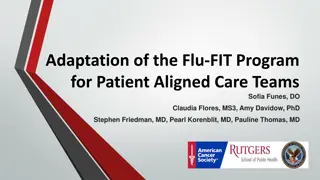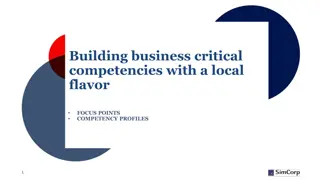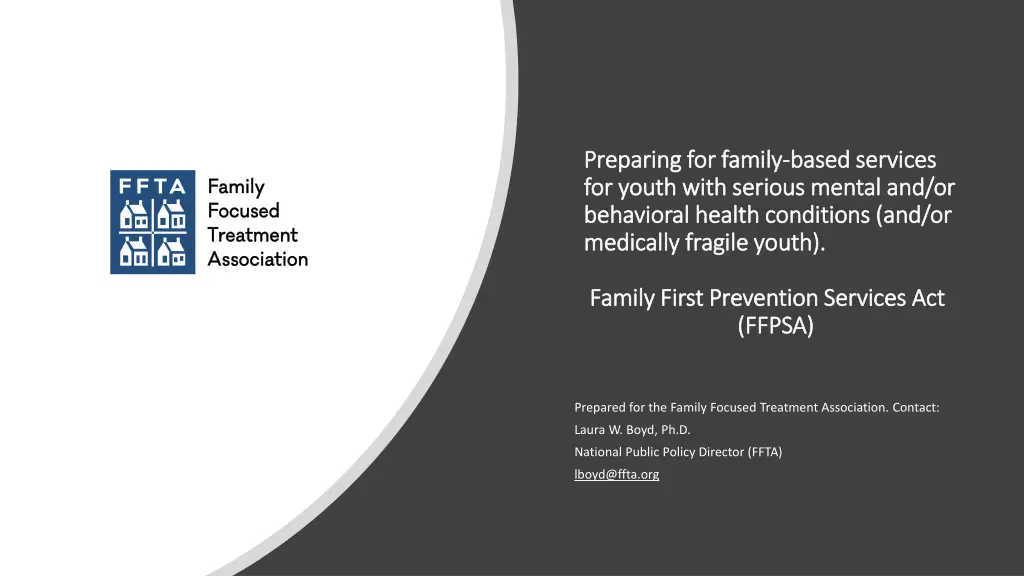
Prevention and Treatment Services for Youth with Mental and Behavioral Health Conditions
Explore the Family First Prevention Services Act (FFPSA) and the provisions it offers for youth with serious mental and/or behavioral health conditions. Learn about family-based care as a preventive and treatment model, including trauma-informed services and evidence-based interventions. Discover the importance of individualized prevention plans, allowable services, and the requirements for safety, permanency, and well-being under FFPSA.
Download Presentation

Please find below an Image/Link to download the presentation.
The content on the website is provided AS IS for your information and personal use only. It may not be sold, licensed, or shared on other websites without obtaining consent from the author. If you encounter any issues during the download, it is possible that the publisher has removed the file from their server.
You are allowed to download the files provided on this website for personal or commercial use, subject to the condition that they are used lawfully. All files are the property of their respective owners.
The content on the website is provided AS IS for your information and personal use only. It may not be sold, licensed, or shared on other websites without obtaining consent from the author.
E N D
Presentation Transcript
Preparing for family Preparing for family- -based services for youth with serious mental and/or for youth with serious mental and/or behavioral health conditions (and/or behavioral health conditions (and/or medically fragile youth). medically fragile youth). based services Family First Prevention Services Act Family First Prevention Services Act (FFPSA) (FFPSA) Prepared for the Family Focused Treatment Association. Contact: Laura W. Boyd, Ph.D. National Public Policy Director (FFTA) lboyd@ffta.org
Preparing for family Preparing for family- -based services for youth with serious mental and/or behavioral health conditions based services for youth with serious mental and/or behavioral health conditions (and/or medically fragile youth). 10.1.21. Family First Prevention Services Act (FFPSA) (and/or medically fragile youth). 10.1.21. Family First Prevention Services Act (FFPSA) Prevention Provisions for youths with serious mental and/or behavioral health conditions. Treatment Family-based Care is a service model for prevention of removal, for intervention and treatment for youth in care, and for reunification services for youth who otherwise would be served in residential or congregate care facilities, but who can be successfully treated in family-homes. Model TFC programs: Are nationally accredited Employ trauma-informed services and trauma- specific interventions Employ evidence-based or evidence-informed treatment services Provide biological parents, relative and kinship caregivers, adoptive parents, and foster parents with specialized training and consultation in the management of children with mental illness or other emotional and behavioral disorders based on an individualized prevention and treatment plan for each child receiving services. Safety - Permanency Well Being: Requirements for all youths under FFPSA. Individualized Prevention Plan Allowable services: mental health and substance abuse prevention and treatment, in-home programs that include parenting skills and training, parent education, and individual and family counseling. Evidence-Based Programs must be approved by federal Family First clearinghouse Trauma informed/trauma specific prevention plan Prudent Parenting regulations included
Preparing for family Preparing for family- -based services for youth with serious mental and/or behavioral health based services for youth with serious mental and/or behavioral health conditions (and/or medically fragile youth). 10.1.21. Family First Prevention Services Act (FFPSA) conditions (and/or medically fragile youth). 10.1.21. Family First Prevention Services Act (FFPSA) Intervention and Treatment Family First Prevention Services Act Treatment Family-based Care Unless otherwise exempt by law, after 10/1/21, youth in foster care will require placement in a foster-family home or in a Qualified Residential Treatment Program (QRTP) as described in PL 115-123, the FFPSA within Division E, Title VII of the Bipartisan Budget Act of 2018 if residential care intends to maintain federal reimbursement for room/board (maintenance) of youth in residential or congregate care. Treatment Family-based Care is a distinct, powerful, and unique model of care that provides children with a combination of the best elements of traditional foster care and residential treatment centers in a family-setting. Public child welfare agencies contract with private provider agencies to deliver TFC in family-homes with special supervised training to caregivers: biological parents, relative and kinship caregivers, adoptive parents, and foster parents
Preparing for family Preparing for family- -based services for youth with serious mental and/or behavioral health conditions based services for youth with serious mental and/or behavioral health conditions (and/or medically fragile youth). 10.1.21. Family First Prevention Services Act (FFPSA) (and/or medically fragile youth). 10.1.21. Family First Prevention Services Act (FFPSA) Reunification Treatment Family-based Care provides: Treatment Family-based Care is a service model for prevention of removal, for intervention and treatment for youth in care, and for reunification services for youth who otherwise would qualify for residential or congregate care services but who can be successfully treated in family- homes. Model TFC programs: Are nationally accredited Employ trauma-informed services and trauma-specific interventions Employ evidence-based or evidence-informed treatment services Provide biological parents, relative and kinship caregivers, adoptive parents, and foster parents with specialized training and consultation in the management of children with mental illness or other emotional and behavioral disorders based on an individualized prevention and treatment plan for each child receiving services. FFPSA allows: Elimination of time limits on reunification while a youth is in foster care. Time-limited (up to 15 months) family reunification services when a youth returns from foster care.
Funding Streams for Treatment Family Funding Streams for Treatment Family- -Based Care Based Care For prevention services to candidates and youth at risk of foster care, TFC services can be provided in the home (or relative placement) and reimbursed by Medicaid. TFC provided services could alternatively be provided under prevention IV-E funds for the specified services in FFPSA. For intervention/treatment services to youth in TFC foster care (relative or non-relative homes), clinical services can be reimbursed by Medicaid, typically under EPSDT or the Rehabilitation Option. Maintenance is paid by IV-E for qualifying youth in foster care. For reunification services, Medicaid is a reimbursement source for youth in foster care. For youth returning home to permanency, TFC provided services could alternatively be provided under IV-B reunification funds for the specified services.
Real Real- -Life Story: Treatment Life Story: Treatment Family Family- -based Care based Care Caleb and Eve Several years ago Jim and Sandy Smith became a licensed treatment family home with our agency. At that time they had three children of their own (high school and middle school aged). That same year, Caleb and Eve were removed from their young mother and put into the State s Care. After multiple placements, Caleb (age 4) and Eve (age 3) were placed in the Smith treatment family home. Caleb, born deaf, was placed in the State s care at age 4. While in his mother s care, Caleb never learned to communicate. After six foster care placements in three months and no attachment to a caring adult, Caleb had no communication skills, no exposure to rules or structure, and no social skills. Caleb also arrived heavily medicated. Eve was 3-years-old, had been in nine foster homes (including psychiatric hospitalizations) in six months and also appeared to be deaf. It wasn't until a thorough medical exam was completed that we were told her hearing was fine. She was also heavily medicated. Within the first couple of years, the entire Smith family became fluent in sign language. Caleb was beginning to communicate and Eve's eyes were showing signs of life and love. While Caleb continued to struggle with his disability, social skills, and many developmental delays, he was beginning the process of healing. Fast forward: several yeas later at our annual Summer Celebration, in walked two lanky, well-adjusted, not medicated, much loved, and very beautiful, young teenagers. The haunting picture of Eve, broken by such a wounded spirit, was erased. And there sat Caleb, as if completing the cycle of healing, holding his 18-month-old foster sister, a beautiful little girl, also a victim of child abuse and neglect. The Smiths have now adopted both Caleb and Eve. Gone are the wild, primal little boy and the little girl so wounded she showed no spirit. -Stacy Bruce, TX
Real Real- -Life Story: Treatment Life Story: Treatment Family Family- -based Care based Care Sammy: Sammy is 23 years old. He first entered foster care at age 2 and experienced about a dozen moves before age 4. He was then placed with a foster family who went on to adopt him at age 9. Due to various matters, he returned to the foster care system at age 16 and then lived in various placements, including residential facilities, until turning 18. However, with support of his parents and treatment family-based services to both Eddie and his parents, today Edward has graduated high school and received his Associate s degree. He aspires to teach middle or high school students someday. He and his adoptively family are healthy and emotionally close. (words by Sammy) Because I do not disclose my mental health information, I often silently deal with living with Asperger s syndrome and depression. Thankfully I am able to adjust well and learn social, life, and financial skills I need to live independently. My therapists, social workers, friends, and family provide insightful advice on how to increase my social awareness and independence. These efforts have genuinely paid off. I ve been living with a roommate in an apartment complex for two years. A good support group, church, martial arts, fishing, employment, and other hobbies have helped ease my transition into adulthood. Therapy, family contact, and social workers have helped me to maintain my mental and physical wellbeing. I think that increased assistance with rent, social skills training, job skills training, and therapy would help me and other foster youth immensely. -Sammy, Florida
Research/Planning Background Research/Planning Background House Labor- H: Appropriations FY 19 Pg. 158. https://docs.house.gov/meetings/AP/AP00/20180626/108473/H RPT-115-HR.pdf Senate HELP :similar to House FY 19 ASPE: https://aspe.hhs.gov/pdf-report/state-practices- treatmenttherapeutic-foster-care GAO: May, 2018 GAO-18-376, Foster Care- Additional Act... to Recruit and Retain Foster Families pdf OIG: Sept, 2018 Treatment Planning and Medication Monitoring (OEI-07-15-00380; 09-18).pdf MACPAC: report underway; expected by April, 2019 Federal legislation expected early in 116th Congress to regulate Licensed In-home Family-based Treatment Services (LIFT Act)

